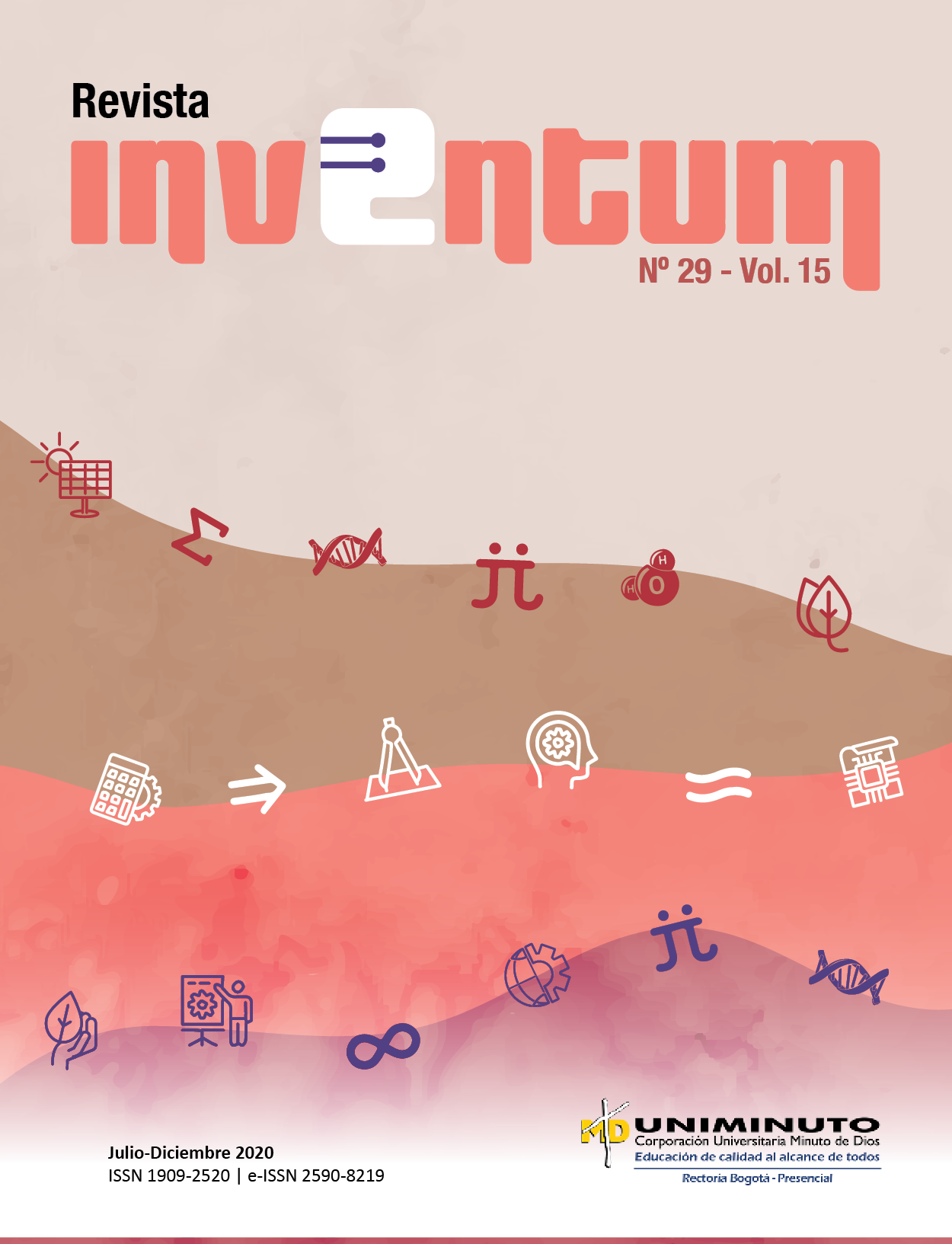Metodologías de recarga de agua subterránea en un sistema de producción de Tectona grandis Linn F. (Teca), en la finca San Felipe, Yacopí
Contenido principal del artículo
Resumen
El presente trabajo consiste en una propuesta que integra metodologías de recarga de agua subterránea para sistemas sostenibles de producción. Para este propósito, se seleccionó el siguiente cultivo de Tectona grandis Linn F. (Reino: Plantae, filum: Spermatophyta, subphylum: Angiospermae, clase: Dicotyledonae, orden: Lamiales Familia: Lamiaceae), debido a que este germina en lugares con temperaturas de 22ºC a 28º C y permite generar condiciones favorables en el terreno, como el enfriamiento de las raíces, lo cual incrementa la absorción de agua subterránea por medio de la evapotranspiración de cada plántula. Lo anterior, se da debido a que, en este proceso, se aumenta la cantidad de vapor de agua en la atmósfera, lo que a su vez intensifica la precipitación en la zona y multiplica, como se mencionó, la recarga de agua subterránea, porque mantiene temperaturas bajas en el subsuelo donde se acentúan las raíces. También posibilita que se adquiera en la finca otra actividad económica, como es el negocio de la comercialización y venta de madera en la finca San Felipe [1], [2]. Además, se sugiere la implementación de siembra en surcos con la metodología de línea clave, la cual consiste en que por la acción de la gravedad el agua fluya de vertiente a ladera a través de unos espacios en el suelo y de esta forma maximizar la infiltración de agua en el subsuelo. Por último, se planea poner en funcionamiento el VAC System, técnica complementaria para el reciclaje de nutrientes y residuos siendo eficiente para la producción en torno a las actividades económicas que se pueden ejecutar en una finca. En conclusión, se pudo determinar que, mediante la implementación de las dos metodologías conjuntas conllevaría a obtener una mayor eficiencia en la optimización de captación de agua subterránea, lo cual se corrobora mediante una comparación entre los litros de agua que se obtienen en cada caso.
Detalles del artículo
Sección
Se solicita a los autores que diligencien el documento de cesión de derechos de autor sobre el artículo, para que sea posible su edición, publicación y distribución en cualquier medio y modalidad: medios electrónicos, CD ROM, impresos o cualquier otra forma, con fines exclusivamente científicos, educativos y culturales
- La obra pertenece a UNIMINUTO.
- Dada la naturaleza de UNIMINUTO como Institución de Educación Superior, con un modelo universitario innovador para ofrecer Educación de alta calidad, de fácil acceso, integral y flexible; para formar profesionales altamente competentes, éticamente responsables y líderes de procesos de transformación social, EL CEDENTE ha decidido ceder los derechos patrimoniales de su OBRA, que adelante se detalla para que sea explotado por ésta
- El querer de EL CEDENTE es ceder a título gratuito los derechos patrimoniales de la OBRA a UNIMINUTO con fines académicos.
Cómo citar
Referencias
grandis L. f) en Costa Rica, p. 1, 2004.
[2] M. Vinueza. (2012). “Ecuador forestal. Ficha técnica de especies maderables. Ficha Técnica No 1: TECA”. [En línea]. Disponible
en: https://ecuadorforestal.org/fichas-tecnicas-de-especies-forestales/ficha-tecnica-no-1-teca/.
[3] Ideam, Sistema de Monitoreo de Bosques y Carbono. (2010). “Cambio de la Superficie Cubierta por Bosque Natural (Desagregación)”. [En línea]. Disponible en: http://smbyc.ideam.gov.co/MonitoreoBC-WEB/reg/indexLogOn.jsp.
[4] G. A. Forero Buitrago, “Dimensionamiento de embalses para fincas en Colombia usando como herramienta los modelos de elevación digital”, Revista de Tecnología, vol. 15, no. 1, p. 137, 2017, DOI: https://doi.org/10.18270/rt.v15i1.2044
[5] G. A. Forero Buitrago, J. C. Ramírez Barreto, y G. A. Ramírez Feo, “Propuesta de almacenamiento de agua lluvia para suministrarla
al municipio de Albán utilizando HEC-Geo-HMS”, Revista Avances: Investigación en Ingeniería, vol. 17, no. 1, pp. 14–15, 2020,
DOI: https://doi.org/10.18041/1794-4953/avances.1.6031
[6] E. Grass, Cosecha de agua y tierra, diseño con permacultura y Key line, vol. 1. México: COAS Editores, p. 198, 2009.
[7] J. Díaz, “Estudio de Índices de vegetación a partir de imágenes aéreas tomadas desde UAS/RPAS y aplicaciones de estos a la agricultura de precisión”, Univ. Complut. Madrid, p. 77, 2015.
[8] P. Muñoz Aguayo, “Apuntes de Teledetección: Índices de vegetación,” Centro de Información de Recursos Naturales, p. 4, 2013.
[9] G. A. Forero Buitrago, “La madera Colombiana, oportunidad de regeneración del flujo de los ríos mediante una producción
sostenible y competitiva”, Revista de tecnología, vol. 15, no. 2, pp. 103–114, 2016, DOI: https://doi.org/10.18270/rt.v15i2.2179
[10] L. Mays, Water Resources Engineering, Vol 3. United States: Wiley, 2019.
[11] G. A. Forero Buitrago, “Integrated farming system for the foothill-regions of Colombia – Ariporo System (A. S.) Un sistema de agricultura integral para la región del piedemonte”, Revista de Tecnología, vol. 12, no. 2, p. 31, 2013, DOI: https://doi.org/10.18270/rt.v12i2.697.
[12] C. Machado, Ingeniería de la Investigación Universidad del Bosque, vol. 4, 2013.





